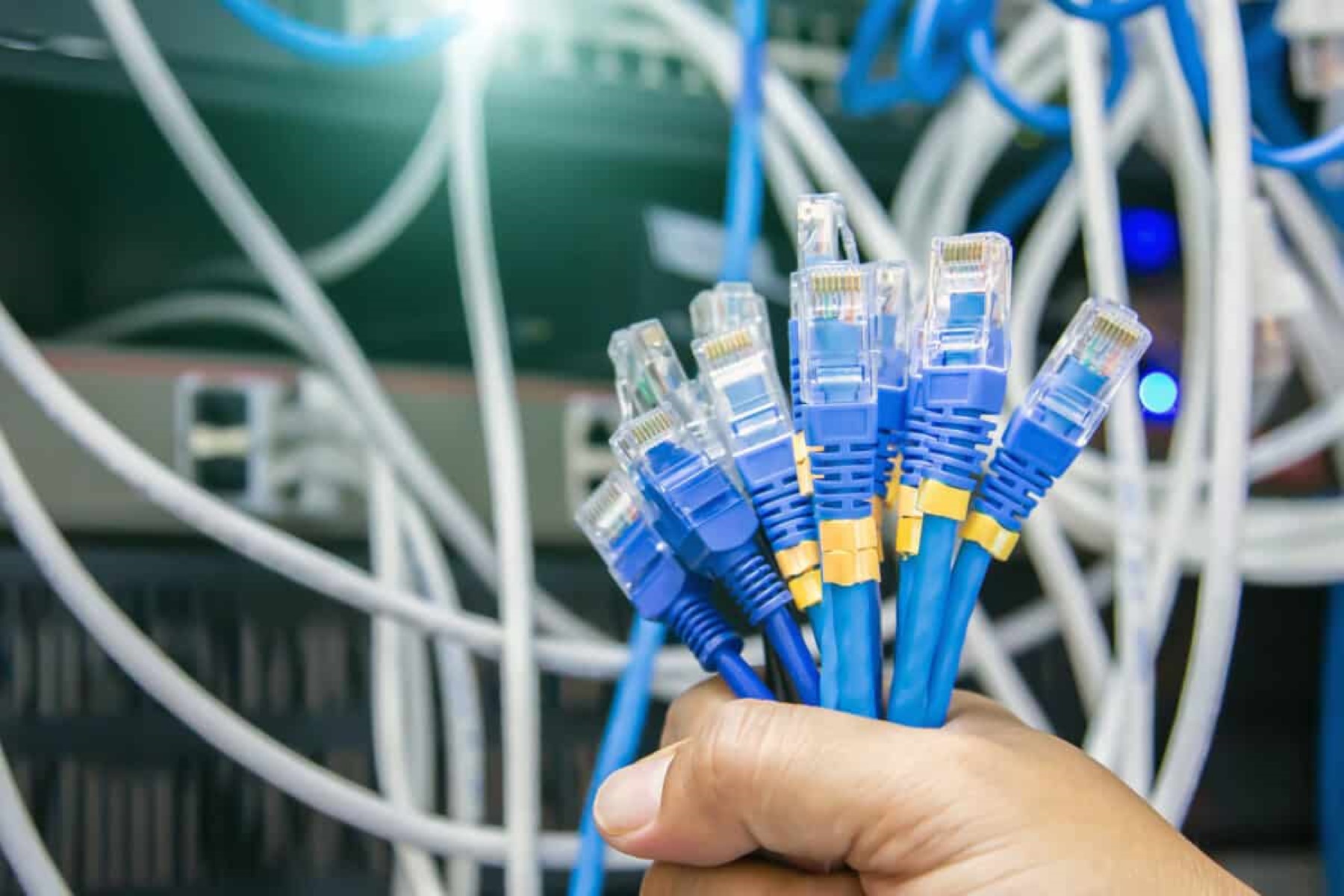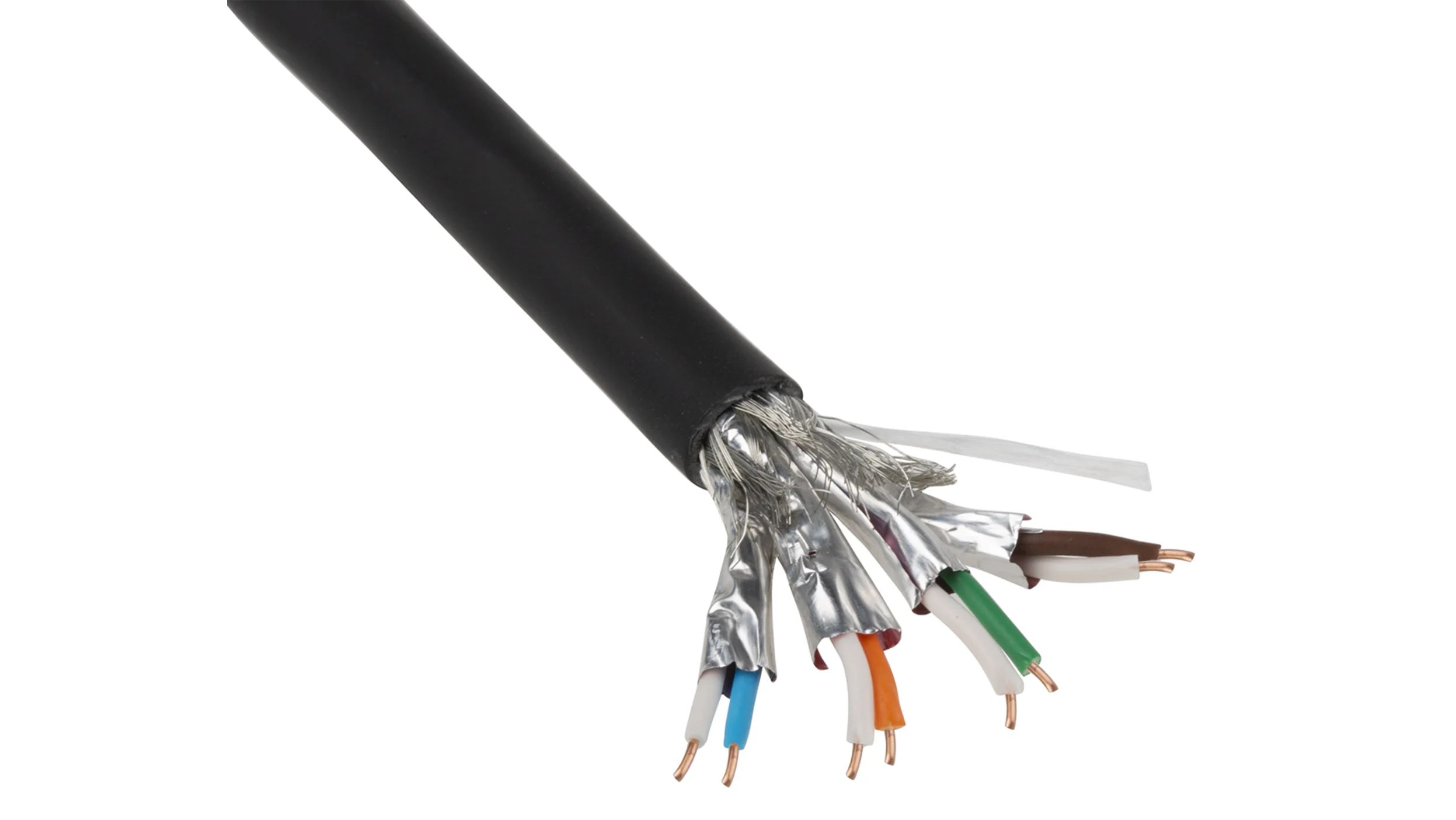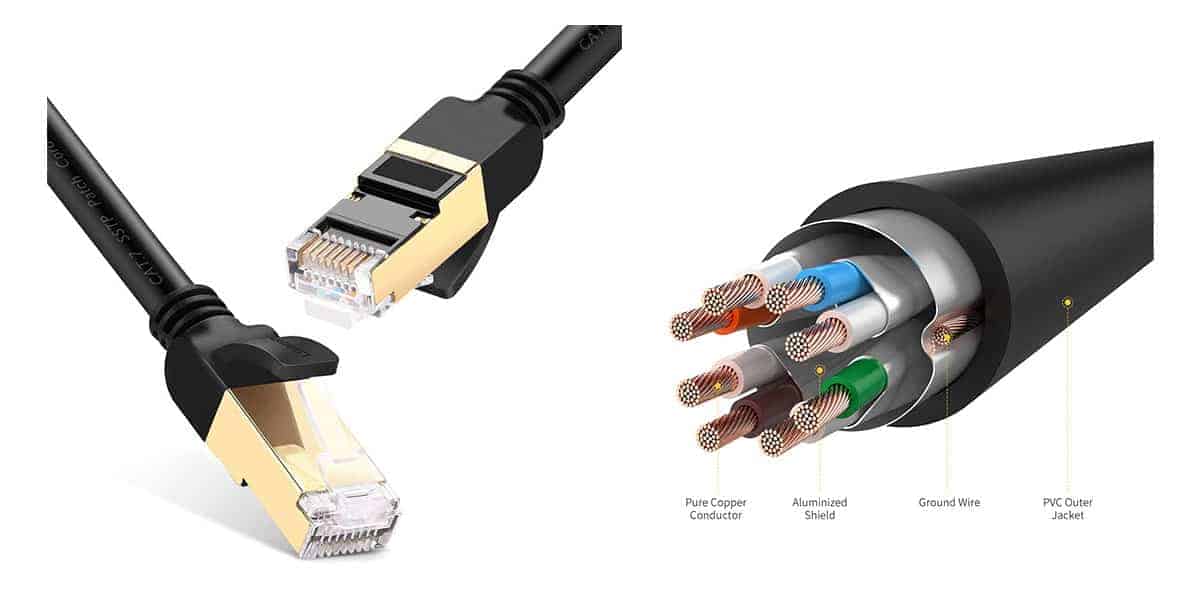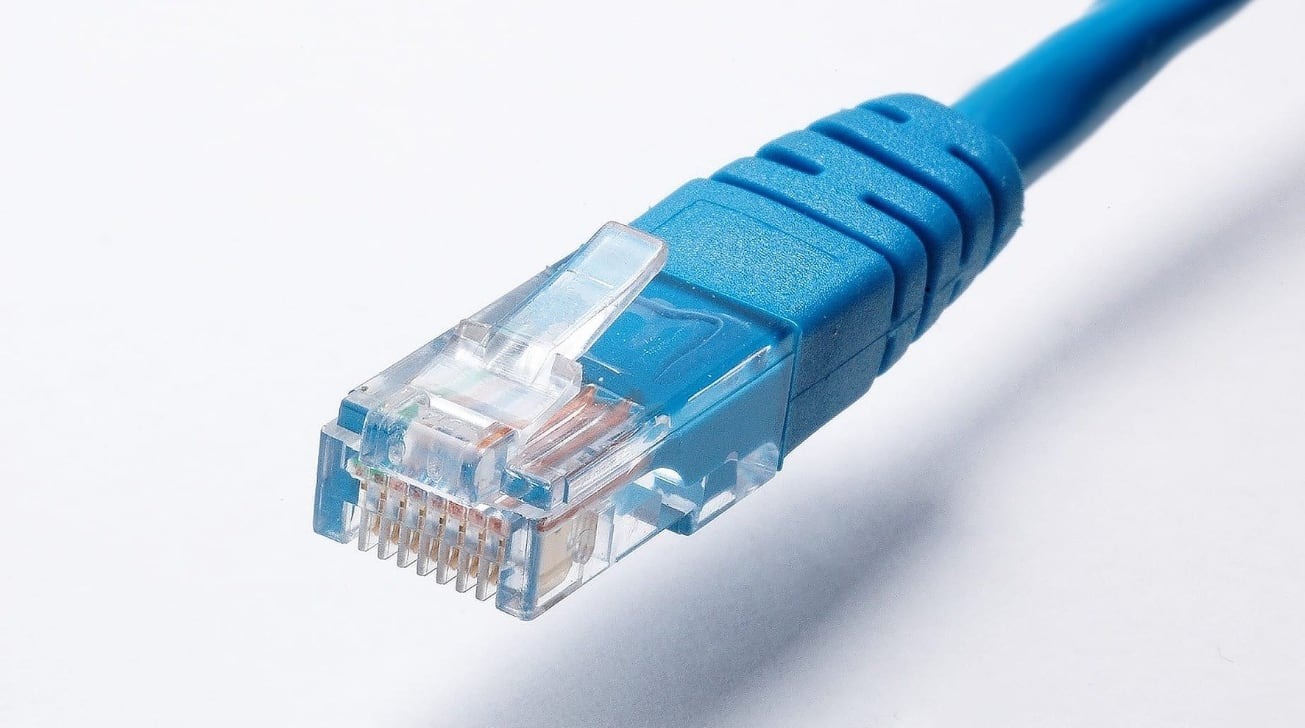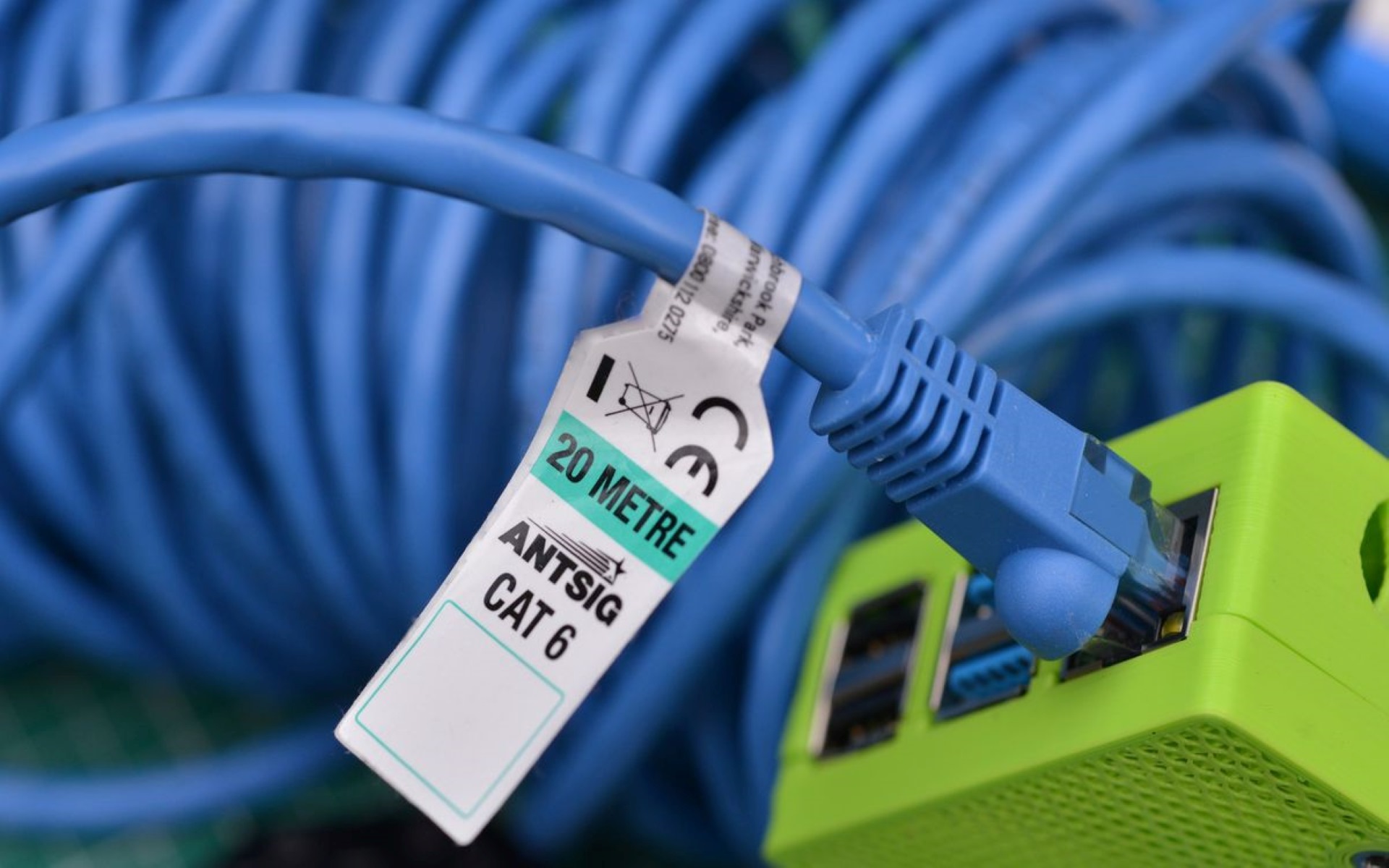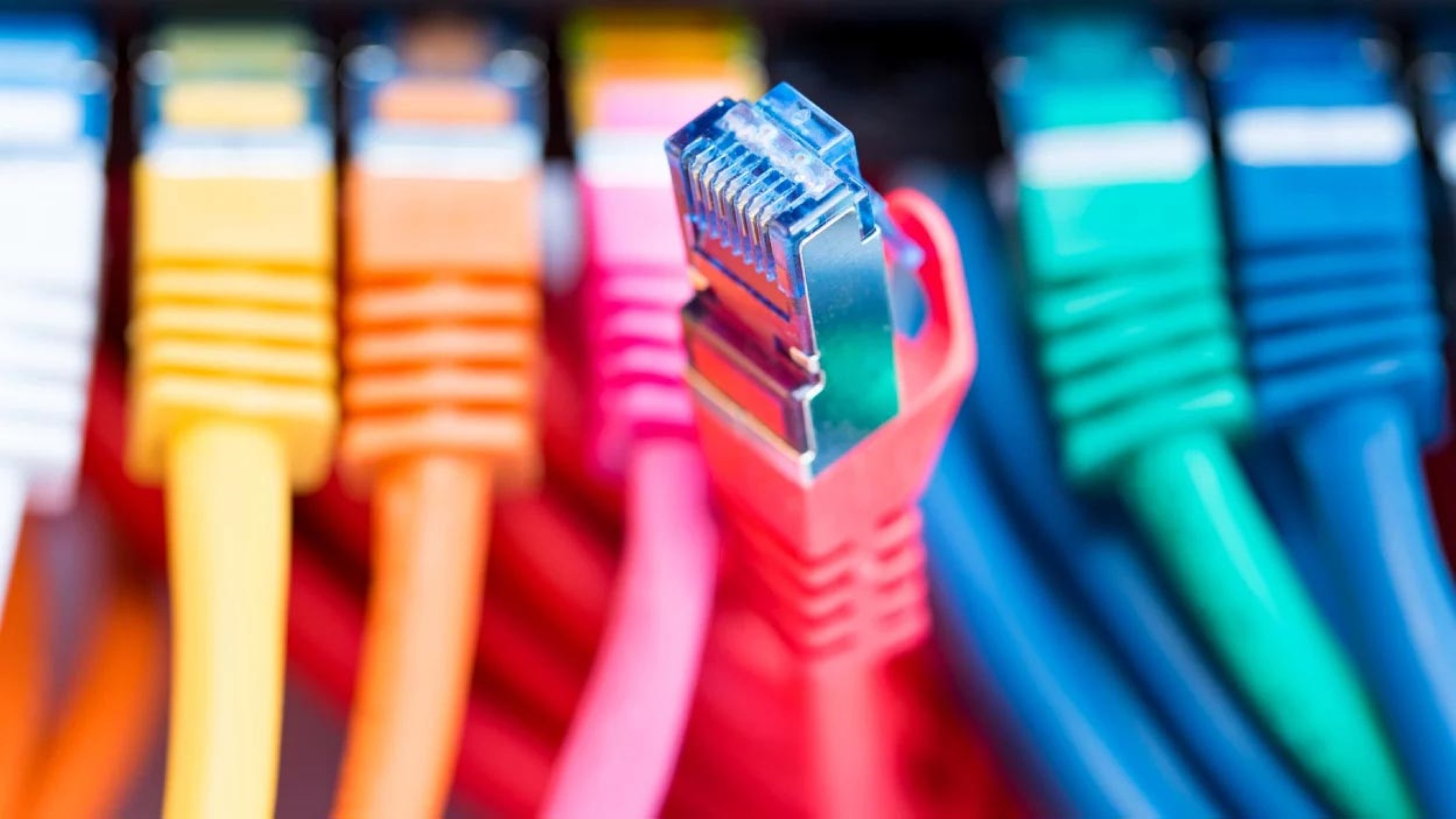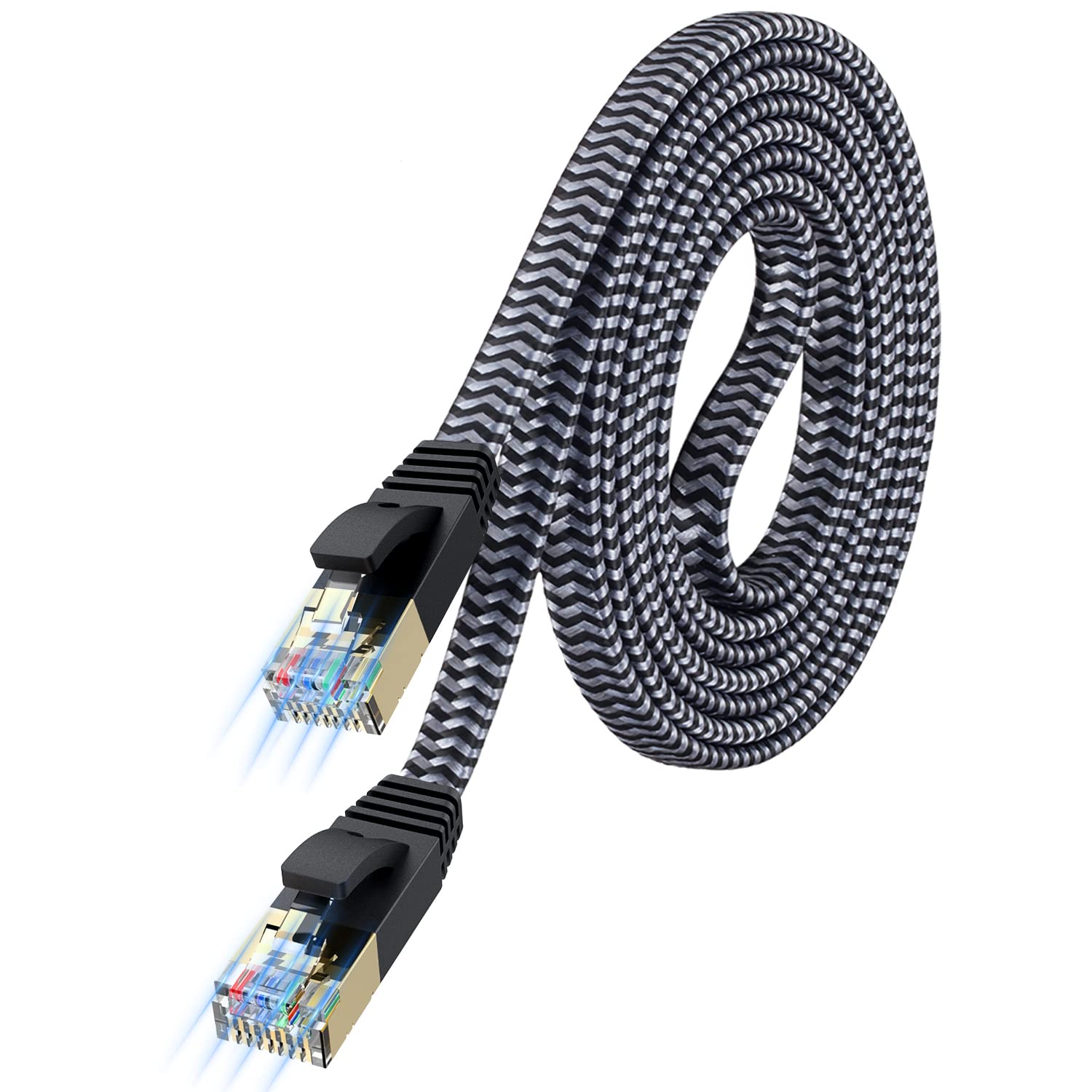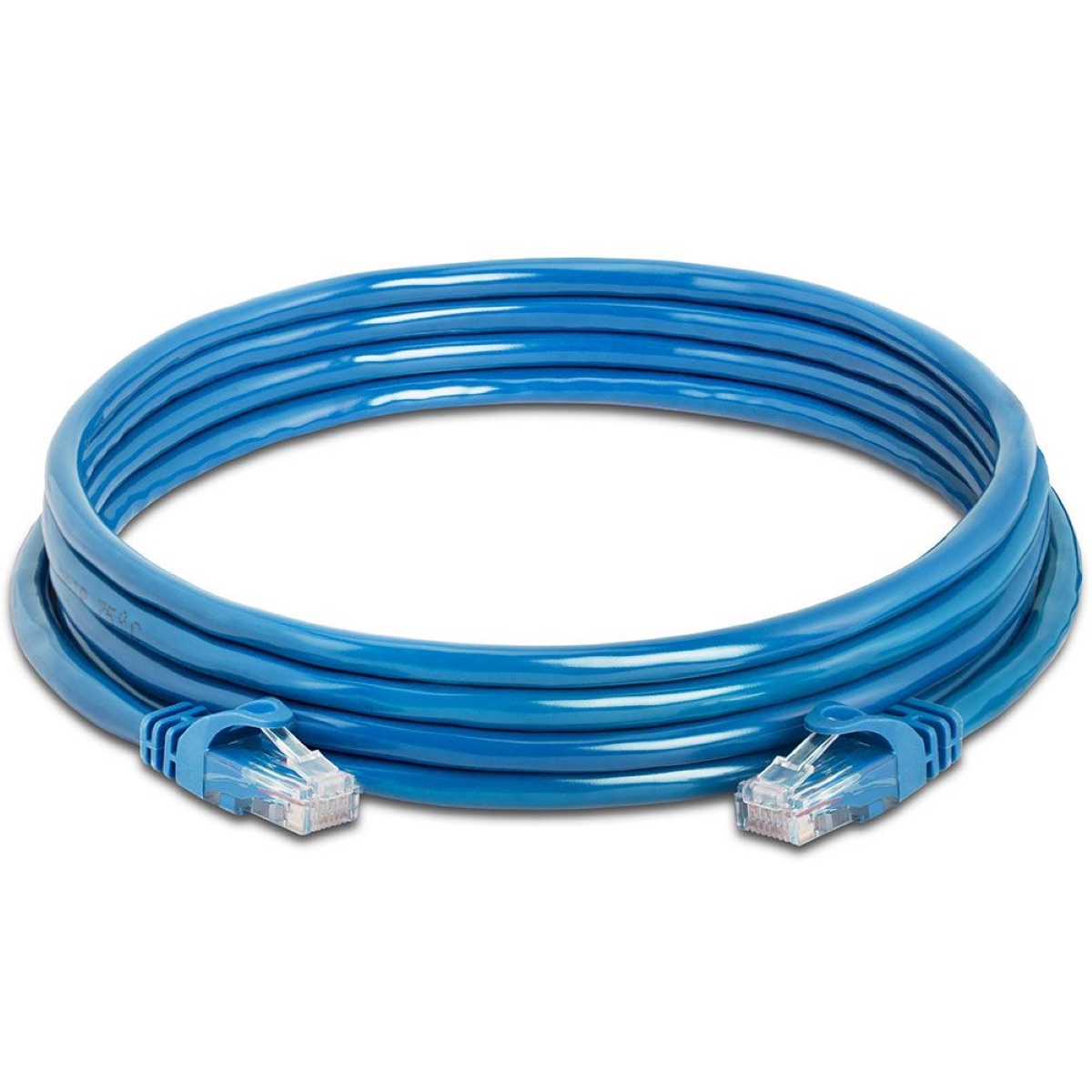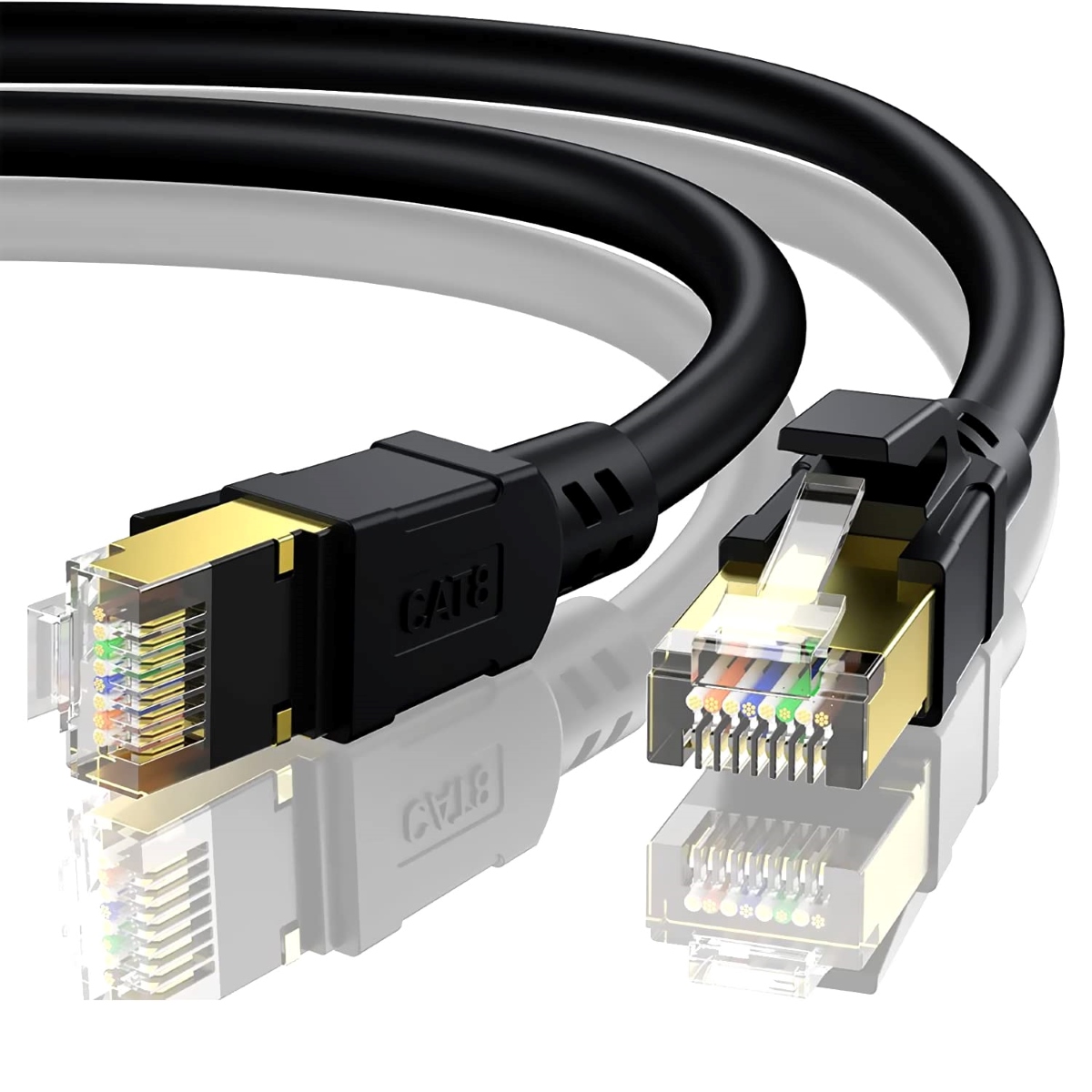Introduction
Welcome to the world of Cat Ethernet cables! In today’s interconnected world, a reliable and high-speed internet connection is crucial for both personal and professional use. Whether you’re streaming your favorite TV shows, working remotely, or gaming online, having the right Ethernet cable is essential to ensure optimal performance and speed.
Understanding the different types of Cat (Category) Ethernet cables available on the market can be overwhelming. With terms like Cat5, Cat5e, Cat6, and Cat6a, it’s easy to get confused. However, fear not! This guide is here to help you navigate through the intricacies of Cat Ethernet cables so you can make an informed decision for your networking needs.
Not all Ethernet cables are created equal. Cat cables are specifically designed to provide high-speed data transmission and reduce crosstalk or interference between wires. They come in various categories, each with its unique capabilities and specifications. By understanding the different categories and being able to identify them, you can ensure you’re using the right cable for your network environment.
In this guide, we’ll explore the benefits of using Cat Ethernet cables, discuss the different types of Cat cables available, and provide tips on how to identify these cables. We’ll also help you recognize the differences between Cat5, Cat5e, Cat6, and Cat6a cables, and offer guidance on choosing the right cable for your needs. Lastly, we’ll provide best practices for installing Cat Ethernet cables to ensure optimal performance and longevity.
Whether you’re a seasoned IT professional, a tech enthusiast, or simply looking to upgrade your home network, this guide will equip you with the knowledge you need to make informed decisions when it comes to Cat Ethernet cables. So, let’s dive in and unravel the mysteries of these essential networking tools!
Understanding Cat Ethernet Cables
Cat Ethernet cables, short for Category Ethernet cables, are a type of twisted-pair copper cables used for network connectivity. They are the backbone of wired networks, providing a reliable and high-speed connection between devices such as computers, routers, switches, and modems.
These cables are known for their ability to transmit data at various speeds and frequencies, depending on the specific category of cable. The different categories, such as Cat5, Cat5e, Cat6, and Cat6a, represent improvements and advancements in technology, allowing for faster data transmission and reduced interference.
The construction of Cat Ethernet cables involves four pairs of twisted copper wire, with each pair enclosed in a separate insulation layer. These pairs are twisted together to reduce electromagnetic interference between them, ensuring a stable and consistent signal transmission. The cables are then encased in an outer jacket for added protection.
One crucial element in understanding Cat Ethernet cables is their performance specifications. These specifications determine the maximum data transmission speed, bandwidth, and distance capabilities of the cable. The higher the category of the cable, the better its performance, allowing for faster speeds and longer distances.
While Cat5 is the most basic category, still widely used in older installations, Cat5e (enhanced) cables offer improved data transmission speeds and reduced crosstalk. Cat6 cables further enhance these capabilities, providing even higher speeds and reduced interference. Cat6a cables, on the other hand, are designed for more demanding applications, such as 10 Gigabit Ethernet, with improved shielding and stricter performance specifications.
It’s important to note that the performance of Cat Ethernet cables can be influenced by factors such as cable length, installation quality, and the devices connected to the network. To ensure optimal performance, it’s essential to choose the right cable for your network requirements and follow best practices when installing and maintaining the cables.
By understanding the basics of Cat Ethernet cables, you can make informed decisions when it comes to upgrading or installing a new network infrastructure. In the next sections, we will explore the benefits of using Cat Ethernet cables, delve into the different categories in more detail, and provide tips on how to identify these cables.
Benefits of Using Cat Ethernet Cables
Using Cat Ethernet cables for your network infrastructure offers a range of benefits that contribute to a reliable and efficient network connection. Here are some key advantages of using Cat Ethernet cables:
- High-speed data transmission: Cat Ethernet cables are designed to handle high-speed data transmission, consistently delivering fast and reliable connection speeds. Whether you’re streaming high-definition videos, transferring large files, or participating in online gaming, Cat cables ensure minimal latency and maximum performance.
- Improved signal quality: Cat Ethernet cables minimize crosstalk and interference, allowing for clear and uninterrupted data transmission. This results in a more stable network connection, preventing data loss and ensuring consistent performance for all connected devices.
- Compatibility: Cat Ethernet cables are universally compatible with a wide range of devices and networking equipment. They can be used for connecting computers, printers, routers, switches, modems, and other network-enabled devices, making them a versatile choice for various networking setups.
- Scalability: Cat Ethernet cables provide scalability options that allow for future network expansion and upgrades. Higher categories, such as Cat6 and Cat6a, offer better performance and bandwidth, accommodating the increasing demands of modern networking technology.
- Cost-effective solution: Cat Ethernet cables are cost-effective compared to other networking options such as fiber optics. They offer a reliable and high-performance network connection at a more affordable price point, making them a popular choice for both residential and commercial networking applications.
- Easy installation: Cat Ethernet cables are relatively easy to install, especially for DIY enthusiasts. They are plug-and-play, requiring no specialized tools or technical expertise. This means you can easily set up a wired network at home or in the office without much hassle.
- Security: Wired connections using Cat Ethernet cables provide an added layer of security compared to wireless connections. Since the data is transmitted through physical cables, the risk of unauthorized access or interception is significantly reduced, ensuring a more secure network environment.
These benefits highlight why Cat Ethernet cables are the preferred choice for many networking applications. Whether you’re setting up a home network, a small business network, or an enterprise-grade network, Cat Ethernet cables offer the reliability, speed, and compatibility you need for a seamless and efficient networking experience.
Different Types of Cat Ethernet Cables
When it comes to Cat Ethernet cables, there are several different types available on the market. Each type, identified by its category, offers varying performance capabilities and specifications. Let’s take a closer look at the different types of Cat Ethernet cables:
- Cat5: Cat5 cables were one of the first commercially available Ethernet cables. They can handle data transmission speeds up to 100 megabits per second (Mbps) and are suitable for basic networking needs. While Cat5 cables are still used in some older installations, they have been largely overtaken by advancements in cable technology.
- Cat5e: Cat5e cables, where ‘e’ stands for ‘enhanced,’ provide improved performance compared to Cat5. They can handle data transmission speeds up to 1 gigabit per second (Gbps) and have reduced crosstalk or interference between wires. Cat5e cables are a popular choice for most Ethernet networks today.
- Cat6: Cat6 cables offer even higher performance compared to Cat5e. They can handle data transmission speeds up to 10 Gbps over shorter distances and have stringent specifications for crosstalk and interference reduction. Cat6 cables are ideal for demanding applications, such as streaming high-definition videos or online gaming.
- Cat6a: Cat6a cables, ‘a’ standing for ‘augmented,’ are an improved version of Cat6 cables. They can handle data transmission speeds up to 10 Gbps over longer distances and have better shielding to minimize alien crosstalk. Cat6a cables are typically used in professional installations that require higher performance and are backward compatible with Cat6 cables.
- Cat7: Cat7 cables are designed for more specialized applications that require extremely high-speed data transmission and maximum shielding against interference. They can handle data transmission speeds up to 10 Gbps or even up to 100 Gbps for shorter distances. Cat7 cables utilize shielded twisted pairs to provide superior performance, making them suitable for high-density environments or professional installations with stringent requirements.
While Cat5e and Cat6 cables are the most commonly used in residential and small-to-medium-sized business networks, Cat6a and Cat7 cables are typically employed in enterprise-grade installations or environments where higher bandwidth and superior performance are critical.
It’s important to note that the performance of Cat Ethernet cables is influenced by various factors, including cable quality, length, and the devices and equipment connected to the network. Considering your specific networking needs and the applications you’ll be running can help determine the appropriate type of cable to use for your network infrastructure.
Now that we’ve explored the different types of Cat Ethernet cables, let’s move on to the next section where we’ll discuss how to identify these cables.
How to Identify Cat Ethernet Cables
Identifying Cat Ethernet cables is essential to ensure you are using the appropriate cable for your networking needs. Here are some key ways to identify Cat Ethernet cables:
- Category Labeling: One of the most straightforward ways to identify Cat Ethernet cables is by checking the labeling or marking on the cable itself. Look for labels that indicate the category of the cable, such as “CAT5,” “CAT5e,” “CAT6,” or “CAT6a.” The label may also include additional information about the cable’s specifications and performance capabilities.
- Cable Color: Cat Ethernet cables often come in different colors, and specific colors may be associated with certain categories. While there is no standardized color-coding for Cat Ethernet cables, it is common to see Cat5e cables in blue, Cat6 cables in yellow, and Cat6a cables in red. However, it’s important to note that cable color alone is not a definitive indicator of the cable’s category.
- Cable Jacket Design: Cat Ethernet cables usually have distinct design characteristics associated with their category. For example, Cat6 and Cat6a cables often have thicker jackets due to the increased shielding requirements. Cat6a cables may also have a printed “Cat6a” or “Cat6 Augmented” marking on the jacket to aid in identification.
- Connector Design: Another way to identify Cat Ethernet cables is by examining the connectors attached to the cable ends. Each category of cable typically has a specific connector type associated with it. For instance, Cat5 and Cat5e cables usually have RJ-45 connectors, while Cat6 and Cat6a cables may have the newer and more robust GG45 or TERA connectors. Checking the connectors can provide a clue about the cable’s category.
- Performance Testing: If you’re unable to visually identify the category of a Cat Ethernet cable, you can perform performance testing. This involves using specialized testing equipment to determine the cable’s performance capabilities, such as its maximum data transmission speed and bandwidth. This method requires technical expertise and equipment, making it more suitable for professional network installations.
It’s important to note that while these methods can help identify Cat Ethernet cables, it’s always recommended to refer to the cable manufacturer’s documentation or consult with industry professionals if you are unsure about a cable’s category or performance capabilities.
Now that we understand how to identify Cat Ethernet cables, let’s move on to the next section where we’ll delve into the differences between Cat5, Cat5e, Cat6, and Cat6a cables.
Recognizing the Differences Between Cat5, Cat5e, Cat6, and Cat6a Cables
Understanding the differences between Cat5, Cat5e, Cat6, and Cat6a cables is crucial when selecting the appropriate cable for your network infrastructure. While these cables may look similar, they vary significantly in terms of performance capabilities and specifications. Let’s explore the key differences:
- Cat5: Cat5 cables were the first iterations of Ethernet cables commonly used in networking. They can handle data transmission speeds up to 100 megabits per second (Mbps). While Cat5 cables have been largely replaced by newer categories, you may encounter them in older installations.
- Cat5e: Cat5e cables, where ‘e’ stands for ‘enhanced,’ are an improved version of Cat5 cables. They offer better performance and reduced crosstalk, supporting data transmission speeds up to 1 gigabit per second (Gbps). Cat5e cables are backward compatible with Cat5 cables and are widely used in residential and small-to-medium-sized business networks.
- Cat6: Cat6 cables provide even higher performance and reduced interference compared to Cat5e cables. They can handle data transmission speeds up to 10 Gbps over shorter distances. Cat6 cables have stricter specifications for crosstalk and are suitable for applications that require faster speeds, such as video streaming and online gaming.
- Cat6a: Cat6a cables, ‘a’ standing for ‘augmented,’ are an upgraded version of Cat6 cables. They offer improved performance and enhanced shielding, supporting data transmission speeds up to 10 Gbps over longer distances. Cat6a cables are commonly used in professional installations that demand higher bandwidth and strict performance requirements.
The key difference between Cat5, Cat5e, Cat6, and Cat6a cables lies in their performance capabilities, maximum data transmission speeds, and distance capabilities. As the technology advances with each category, the cables become more capable of handling higher speeds and longer distances, reducing crosstalk and interference for a more reliable network connection.
If you’re unsure which category of cable to choose, it’s generally recommended to opt for Cat5e or higher. Cat5 cables are being phased out, and Cat5e cables provide improved performance at a similar price point. For more demanding applications or professional installations, Cat6 or Cat6a cables may be the ideal choice.
Remember, compatibility should also be considered. While Cat6 and Cat6a cables offer higher speeds and performance, they require compatible networking equipment and devices to realize their full potential. It’s essential to ensure that your network infrastructure supports the category of cable you choose.
Now that we’ve covered the differences between Cat5, Cat5e, Cat6, and Cat6a cables, let’s move on to the next section where we’ll discuss factors to consider when choosing a Cat Ethernet cable.
Factors to Consider When Choosing a Cat Ethernet Cable
When selecting a Cat Ethernet cable for your network, several factors come into play to ensure optimal performance and compatibility. Here are the key factors to consider:
- Speed and Performance: Consider the maximum data transmission speed required for your network. If you need high-speed connections for demanding applications such as video streaming or gaming, Cat6 or Cat6a cables are recommended. For basic networking needs, Cat5e may suffice.
- Distance: Take into account the distance over which the cable will be run. Cat6 and Cat6a cables can maintain higher speeds over longer distances compared to Cat5e cables. If you require a reliable network connection for relatively long runs, consider using Cat6 or Cat6a cables.
- Compatibility: Ensure that your networking devices, including routers, switches, and network interface cards, support the category of cable you plan to use. While higher categories such as Cat6 and Cat6a offer better performance, they may require compatible equipment to realize their full potential.
- Budget: Consider your budget when selecting a Cat Ethernet cable. Higher category cables such as Cat6 and Cat6a tend to be more expensive than Cat5e. Assess your networking needs and strike a balance between performance requirements and budget constraints.
- Futureproofing: If you anticipate future network expansion or upgrades, it may be wise to invest in higher category cables. Cat6 and Cat6a cables provide better scalability and can handle increasing bandwidth demands as technology advances.
- External Interference: If your network environment is prone to external interference from sources like electrical equipment or neighboring cables, consider using shielded Ethernet cables. Shielded cables, such as STP (Shielded Twisted Pair) and FTP (Foiled Twisted Pair), provide extra protection against electromagnetic interference.
- Installation: Consider the ease of installation, especially if you plan to handle the installation yourself. Cat5e cables are generally easier to work with due to their smaller size and more flexible nature. Cat6 and Cat6a cables, with their thicker jackets and stricter specifications, may be more challenging for DIY installations.
By taking these factors into account, you can choose the appropriate Cat Ethernet cable that suits your network requirements and provides the necessary performance and compatibility for your specific applications.
Next, we’ll explore best practices for installing Cat Ethernet cables to ensure optimal performance and longevity.
Best Practices for Installing Cat Ethernet Cables
Proper installation of Cat Ethernet cables is crucial to ensure optimal performance, reliability, and longevity of your network infrastructure. Here are some best practices to follow when installing Cat Ethernet cables:
- Plan and Design: Before starting the installation, carefully plan and design the network layout. Consider factors such as cable lengths, termination points, and potential obstructions. This will help ensure efficient and organized cable runs.
- Use Quality Cables: Invest in high-quality Cat Ethernet cables from reputable manufacturers. Quality cables with proper insulation and shielding provide better signal quality, reduce interference, and enhance overall network performance.
- Avoid Excessive Cable Lengths: Keep cable lengths as short as possible to minimize signal loss and degradation. Longer cable lengths can result in reduced data transmission speeds and increase the chances of crosstalk and interference.
- Follow Bending Radius: Be mindful of the bending radius of the cable during installation. Do not bend the cable beyond its recommended radius, as this can damage the internal wires and affect signal quality. Consult the manufacturer’s recommendations for the specific cable type.
- Avoid Sharp Twists: Avoid sharp twists and kinks in the cable while laying it. Twisting the cable excessively can cause impedance issues and negatively impact signal integrity. Maintain a smooth and gentle bend radius when routing the cable.
- Separate from Power Cables: Keep Ethernet cables separated from power cables to minimize the risk of interference. Electrical cables can produce electromagnetic fields that may disrupt the transmission of data through Ethernet cables. Maintain a distance of at least one foot between the Ethernet cables and power cables.
- Proper Termination: Ensure proper termination of the cable connectors. Follow industry-standard termination techniques, such as using a punch-down tool or RJ-45 connector crimping tool, to properly attach the connectors to the cable. Improper termination can result in signal loss and performance issues.
- Labeling and Documentation: Label and document the cables during installation. This will make it easier to identify and troubleshoot any issues that may arise in the future. Use clear and concise labeling to indicate the purpose and destination of each cable.
- Cable Management: Implement proper cable management techniques to keep the installation organized and neat. Use cable ties, cable trays, and conduit to bundle and secure the cables. This not only improves the aesthetics of the installation but also makes it easier to identify and access specific cables when needed.
- Regular Inspection and Maintenance: Perform regular inspections of the cables and connections to identify any signs of wear, damage, or degradation. Conduct periodic testing to ensure the cables meet the desired performance standards. Promptly address any issues to maintain a reliable and efficient network.
By following these best practices, you can ensure a well-installed and high-performing Cat Ethernet cable network. Proper installation and maintenance will help maximize signal quality, reduce the chances of interference, and provide a resilient network connection for your devices.
Now that we’ve explored the best practices for installing Cat Ethernet cables, let’s conclude this guide with a brief summary of what we’ve covered.
Conclusion
In this comprehensive guide, we have delved into the world of Cat Ethernet cables, exploring their types, benefits, identification methods, differences, factors to consider, and best installation practices. Understanding Cat Ethernet cables is essential for achieving a reliable and high-speed network connection.
Cat Ethernet cables, such as Cat5e, Cat6, and Cat6a, provide faster data transmission speeds, reduced interference, and improved performance compared to older cable categories like Cat5. By selecting the appropriate cable for your networking needs, you can optimize your internet connectivity and ensure seamless performance for various activities, from streaming to gaming and everything in between.
When choosing a Cat Ethernet cable, consider factors such as speed, distance, compatibility, budget, futureproofing, external interference, and ease of installation. These factors will help you make an informed decision based on your specific requirements and ensure a reliable and efficient network infrastructure.
Remember to follow best practices when installing Cat Ethernet cables, including planning and designing your network layout, using quality cables, avoiding excessive lengths, following bending radius guidelines, and separating the cables from power cables. Taking these steps will help maintain signal integrity and protect against interference, resulting in a robust network connection.
Regular inspection, maintenance, and proper cable management will sustain the performance and longevity of your Cat Ethernet cable network. By following these practices, you can prevent potential issues and address them promptly, ensuring a reliable and efficient network for your home or business.
With this knowledge in hand, you are well-equipped to make informed decisions, install, and maintain Cat Ethernet cables for your networking needs. Whether you’re setting up a home network, upgrading your existing infrastructure, or embarking on a professional network installation, your understanding of Cat Ethernet cables will contribute to a seamless and reliable network experience.







